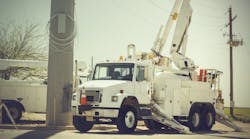As with any new technology in trucking, the move to zero- and near-zero-emission trucks is going to take place over the course of decades. These cleaner trucks are just now going into production, and the reality is they are not yet suited for every trucking application. While battery-electric trucks make sense for low-mileage applications, they are not well-suited for long-haul trucking operations. Traditionally fleets have a measured process for trading in their assets, with life cycles that range from two to 10 years.
The transition to the cleaner movement of freight is coming, spurred on by both regulations and pressure from shippers which have their own ESG goals.
One thing that is different about the current technological transformation is that it involves more than the truck itself. The move to clean powertrains means fleets need to look at how those trucks are going to be fueled with electricity, hydrogen, or other fuel sources.
See also: At alt-truck summit, ‘infrastructure’ the keyword
Charging stations for these battery-electric trucks are not readily available across the nation, and from what I heard at the Technology & Maintenance Council’s spring meeting, most fleets are planning for depot charging, at least for now. While that sounds simple, the reality is that being able to charge more than a few electric trucks with the current electric power supply at their DCs will be a struggle.
Fleets that have already piloted electric vehicles all strongly suggest that you engage with your local utility early to ensure that you have the power you need when the trucks arrive. The process of getting enough electric power to your depot can take years, not months. While some utilities have dedicated people on staff who are assigned to work with fleets on electrification, others do not. It can sometimes take months to even find the right person at the utility who can assist you, and then you will have to spend time educating them about your operation so that the proper solution can be developed.
See also: Bottlenecks, infrastructure undermine alternative fuel trucks
So, when is the right time to engage with your local utility? Frankly, it’s right after you start thinking that you might want to add an EV to your fleet. Contact the utility and have them come out to do an assessment of your site to see if there is enough power to meet your charging needs. And if there isn’t, work with them to develop a plan that will get you the power you need before your trucks arrive. It is likely that there will be some significant construction at your depot to get the proper charging infrastructure in place.
If you wait to talk with the utility until your trucks arrive, those trucks may end up sitting by the fence or you may end up with significantly higher utility bills as you are forced to charge either off-site or during peak electric pricing periods.
Unlike other technological transformations in trucking, as you move to electric vehicles, you’ll find that the truck is the easy part of the equation—the power supply will be your real challenge.
Patrick Gaskins, SVP of Corcentric Fleet Solutions, oversees both sales and operations for the company's fleet offerings. Gaskins joined the company in 2010, bringing more than 30 years of experience as a financial services professional in the transportation industry. He leads a team that works with a supply base of more than 160 manufacturers to help the country’s largest fleets manage all aspects of their fleet operations and fleet-related spending.




